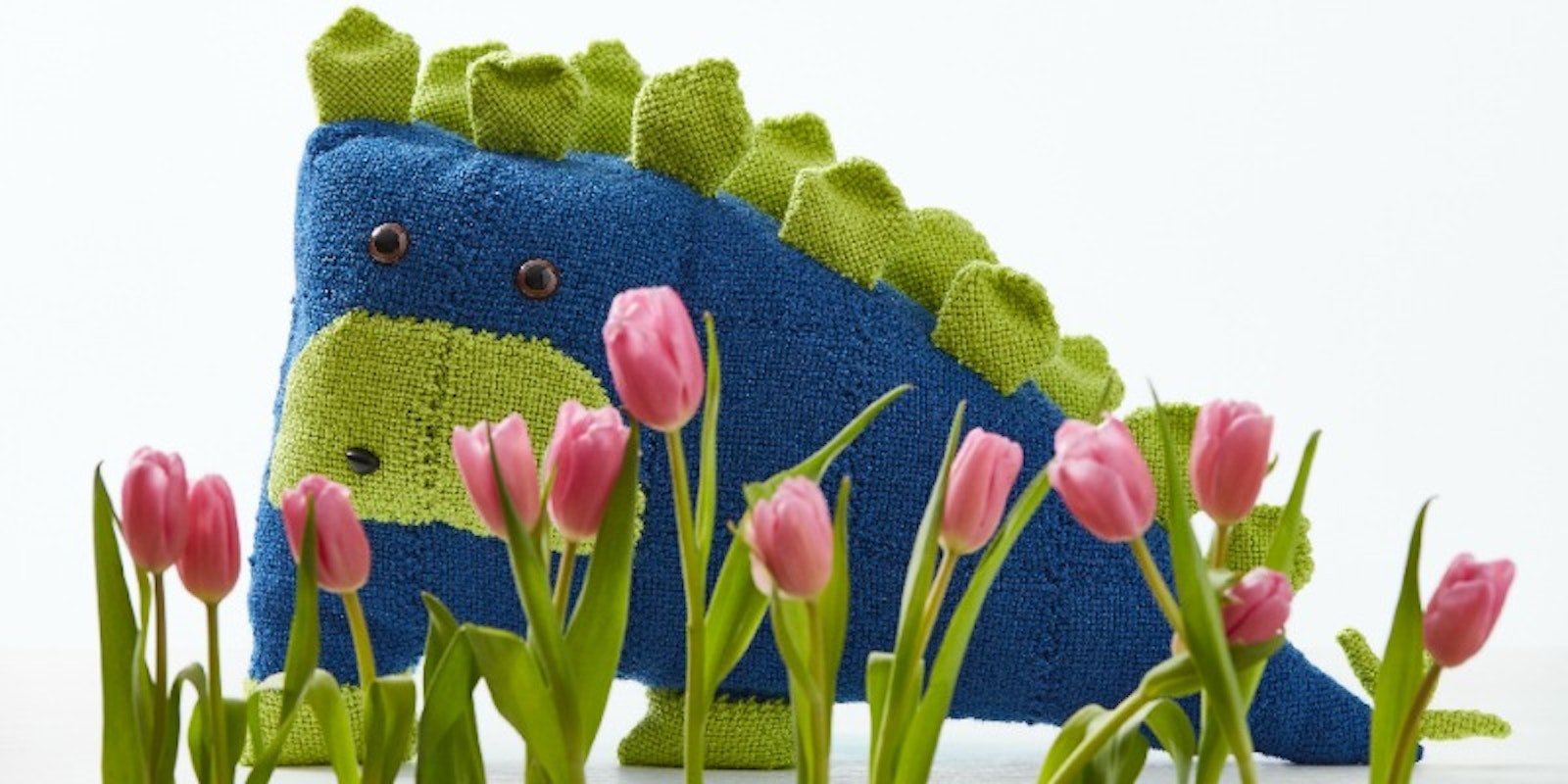The slip stitch is one of those great stitches used by sewist to create nearly invisible seams. It's used when sewing together two folded pieces of fabric in a way that hides most of the joining thread in those folds. It's a great technique to have up your sleeves when sewing your handwoven fabric together, whether it's fine fabric from a multishaft loom or a some thicker pin loom squares. The slip stitch tutorial here uses pin loom squares just because it shows up better. I also used 8/2 cotton in bright white instead of a finer, matching thread so you all can see it better.
- Hold your two folded pieces of cloth together. Insert your needle and thread between the fold of cloth A so the knot is hidden between the fold.
First stitch from the side and the top
Step 2: Bring your needle over the top of Fabric A and insert it into roughly the same spot in fabric B on the fold. The needle will go between both pieces of Fabric B.
Step 3: Keeping the needle under the fold and between the two sides of Fabric B, advance the needle your desired amount and then push the needle through the top of the fold of fabric B. This way, as you have the thread travel from right to left it does so under the fold where it will be hidden.
Step 4: Pull the needle and thread through Fabric B and insert it in the opposite side through Fabric A, just as we did in step 2, making sure to keep it under the fold and between the two sides of Fabric A. (I like to think of it as keeping the needle in a tunnel.)
Step 5: Pull the thread out and let's take a look at what we've got. In the photo below my thread has traveled about about 3/4 of an inch but you can only see two very small bits of the seam--most of the thread is between the folds of Fabric A and Fabric B.
Step 6: Repeat step 2-4 until you reach the end. Knot your thread in a discreet place within the folds and snip it off. Voila! The two folded squares are sewn together in a way that makes the stitching almost invisible.
When I lay the two halved squares flat the seam is even more invisible.
When I open up one of the squares of fabric and look inside, you can see how the hidden stitches travel along the fold in the fabric.
I used big stitches to make the process easier to see. The smaller your stitches under the fold, the stronger your cloth. You'll have more stitches on top of the fold, however, so they might be more visible, depending on how well your yarn or thread matches the fabric you're sewing together. You'll need to use your own judgement to figure out how big or small to stitch the pieces together. I suggest testing after 5 stitches or so to see if it's strong enough, if it's not it's easy to (carefully) pull or cut out your seam and start again.
Happy Seaming!










